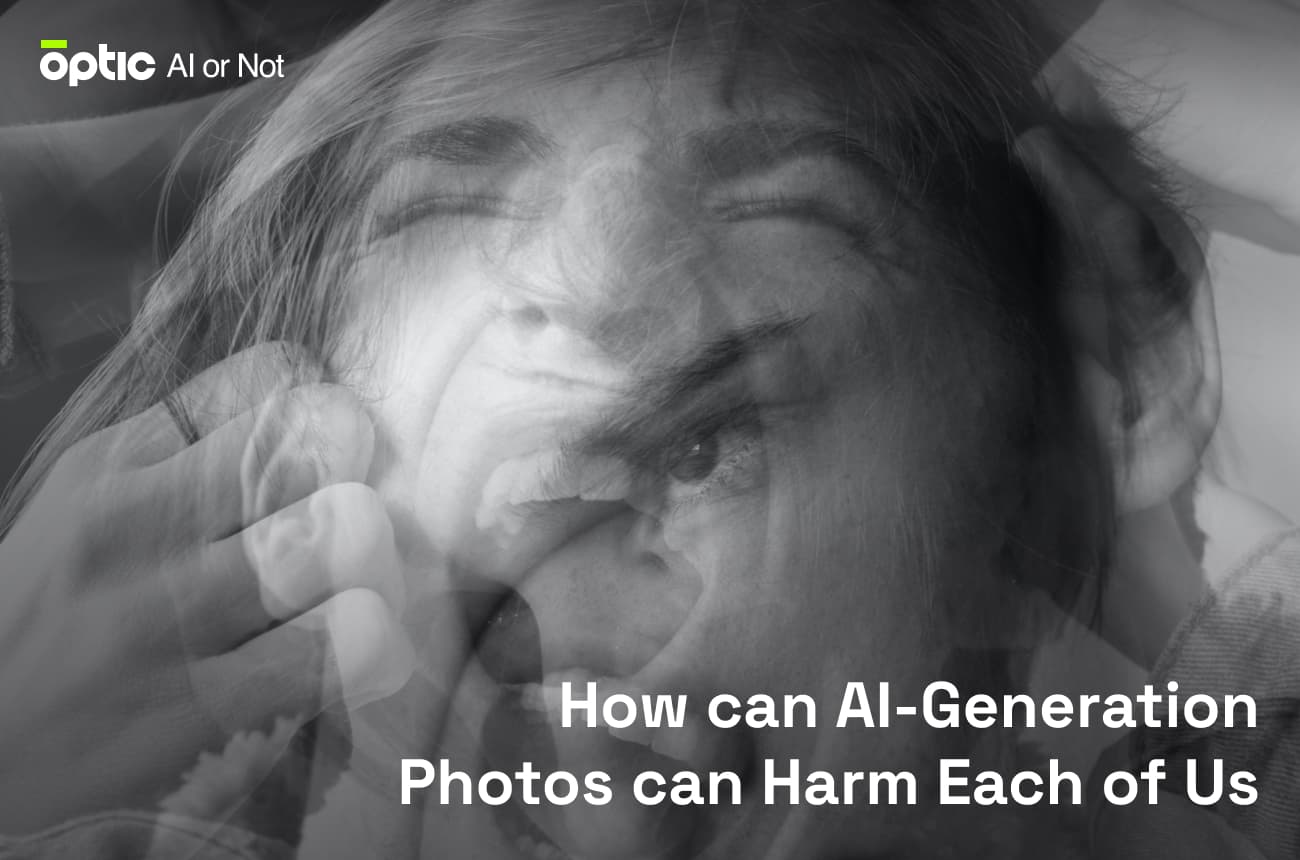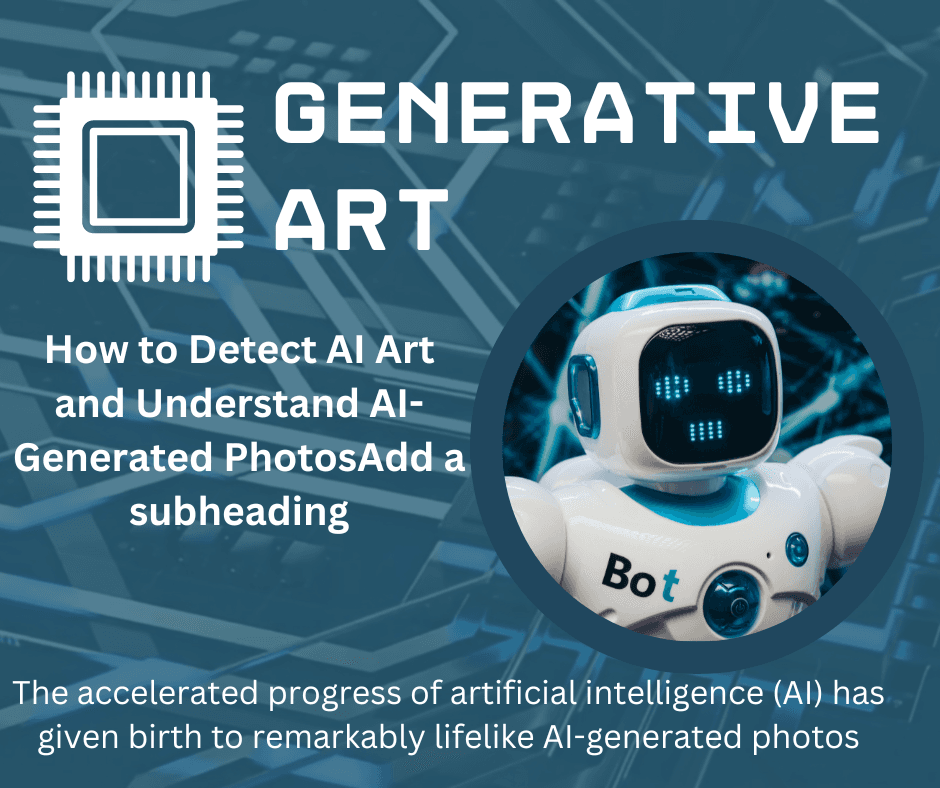How can AI-Generation Photos can Harm Each of Us

Introduction: The Rise of AI-Generated Images
The accelerated progress of artificial intelligence (AI) has given birth to remarkably lifelike AI-generated photos. Often indistinguishable from real-life images, these creations have infiltrated various sectors such as social media, advertising, and journalism.
However, these synthetic photos pose potential threats, from misinformation to privacy violations and ethical quandaries. We must grasp the challenges to effectively counteract using an AI-generated image checker or AI-generated art test and understand how to recognize fake AI-generated images.
Demystifying AI-Generated Photos: The AI-Generated Tester
The Process of Crafting Realistic AI Images
AI-produced photos are the fruit of deep learning techniques, primarily generative adversarial networks (GANs). GANs encompass a generator and a discriminator that cooperate to construct exceptionally realistic images. These AI algorithms progressively enhance the images through iterative refinement, culminating in a photo-realistic output.
The Ubiquity of AI-Generated Photos
Images created with the aid of artificial intelligence have become increasingly popular in various industries, including advertising, stock photography, virtual reality, and the creation of realistic avatars. AI's ease of producing visually striking images has led to widespread use and adoption.

Unmasking the Dangers: Human or Not AI?
The Threat of Misinformation
Propagating False Narratives: Images generated by artificial intelligence (AI) can be easily altered to create misleading content, leading to false stories and eroding the media's credibility. This highlights the need for caution when interpreting images created using AI algorithms. Hence, AI-generated art test is essential in Art Work now.
Swaying Public Perception: By misrepresenting actual events or creating fictitious scenarios, AI-generated photos can alter public opinion, impacting democratic processes and societal harmony.
Privacy Infringement
Unauthorized Use of Personal Images: Public images, such as those shared on social media, can be utilized to create AI-generated photos, leading to potential privacy breaches and personal security risks.
Identity Theft: AI-generated images can be exploited to forge credible fake identities, posing significant threats to personal reputation and online safety.
Ethical Issues
Non-consensual Use of Likeness: Using AI-generated photos has brought up a significant ethical issue surrounding the ownership and control of individuals' likenesses. This technology can produce images that closely resemble real people without their consent or knowledge. Such actions raise concerns about the moral implications of using someone's image without permission and the potential consequences of relinquishing control over one's likeness.
Amplification of Biases: It is important to note that AI algorithms can strengthen existing societal biases if trained on unrepresentative or biased datasets. This can have the unfortunate consequence of exacerbating social inequalities and discriminatory practices. It is, therefore, essential to ensure that AI algorithms are trained on diverse and unbiased datasets to prevent such outcomes.
The AI Detector: Identifying AI-Generated Images
Challenges in AI Detection
Identifying AI-generated images poses a significant challenge due to the progressive nature of AI algorithms. This challenge arises from these images' highly realistic visual quality, the constantly evolving AI techniques, and the absence of any obvious signs of manipulation.
Approaches for AI-Generated Detection
AI-Based Detection Algorithms: Artificial Intelligence (AI) can be utilized to create detection algorithms that can accurately identify photos that AI has generated. This is possible by analyzing subtle patterns and inconsistencies within the images through AI-generated art test. With this technology, it is possible to distinguish between photos that humans have generated and those caused by AI, allowing for greater transparency and accuracy in image analysis.
Collaboration Between Researchers and Tech Companies: When individuals come together and pool their resources, they can create powerful detection tools that can accurately and efficiently identify photos generated using artificial intelligence technology. Such devices are crucial in today's digital age, where the authenticity and credibility of images can be easily manipulated and distorted. By working collaboratively to develop these robust detection tools, we can safeguard the integrity of visual content and ensure that it is used responsibly and ethically.

AI-Generated Checker Free: Mitigating the Impacts of AI-Generated Photos
Legal Protection and Regulations
It is imperative to put in place legislative measures that safeguard the privacy rights of individuals and thwart the unauthorized use of photos created with AI. Furthermore, it is crucial to establish and enforce penalties for any misuse of images that are generated using AI technology. This will ensure that individual's privacy is protected and that there are consequences for any breaches or violations of their rights.
Promoting Awareness and Media Literacy
Educational initiatives are crucial in promoting public awareness regarding the prevalence of AI-generated content. Such campaigns aim to equip people with the necessary tools to engage in critical thinking, enabling them to identify and effectively combat misinformation and manipulation. By fostering a more resilient and informed citizenry, these efforts can help to mitigate the potential harms associated with the proliferation of AI-generated content in modern society.
Ethical Guidelines for AI Development
Transparent AI-generated Content Disclosure
Developers are highly recommended to give utmost importance to the clear and transparent disclosure of AI-generated content. Providing users with information about their interactions with AI-generated photos ensures complete transparency and enables them to make informed decisions. This practice builds trust and fosters a sense of reliability and dependability among users. Hence, it is imperative to prioritize disclosing AI-generated content to maintain transparency and promote ethical practices.
Establishing Ethical Guidelines
AI developers and users must adopt ethical guidelines prioritizing responsible AI development, respect for privacy, and avoiding biases. These principles must be upheld to ensure that AI technology is developed and utilized relatively and justly without jeopardizing the safety and well-being of individuals and society. By adhering to these ethical standards, we can foster a culture of responsible AI development that benefits all.
Conclusion: AI-Generated or Not Checker
While AI-generated photos present significant risks, proactive efforts can ensure the responsible use of AI technology, so it's imperative to understand how to recognize fake AI-generated images. By fostering collaborations between various stakeholders, we can develop robust AI detection, strengthen regulations, uphold ethical standards, and harness the power of AI-generated photos for everyone's benefit and check misuse through AI-generated image checker.